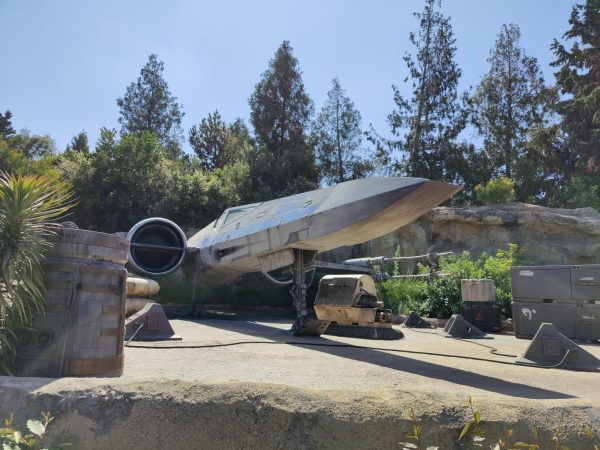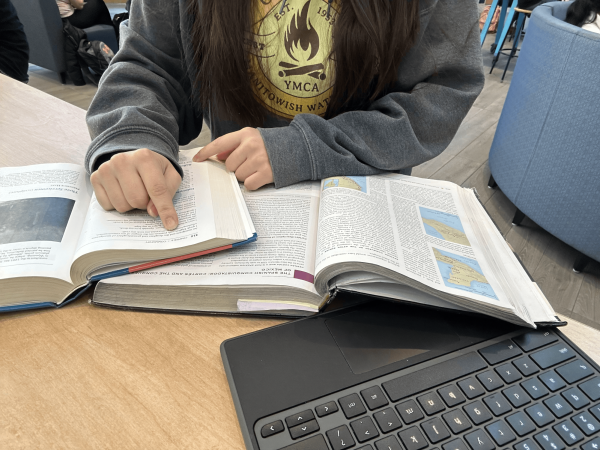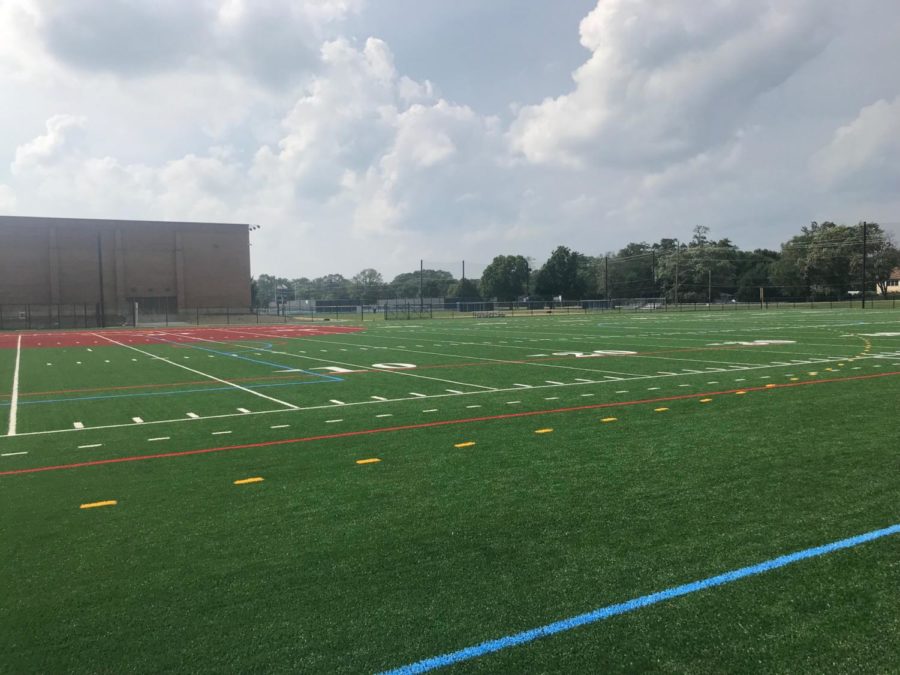Better practice, risk of injury: New field for athletes
The new turf field in all of its slippery glory
When students came back to DGS, a new addition was towering over 63rd St; the east turf field beckoned athletes and musicians alike, and I could only imagine the excitement they all felt.
After months of blaring construction noises during my 8 a.m. pre-calc class, I was mainly just excited for the distraction to be over. It was just another piece in the million-dollar renovation puzzle.
However, the school’s “field facelift” process hasn’t been a painless one. Though it looks pretty on the outside, on the inside, there’s some work to be done.
The issue is within the grass itself. Most artificial turf is made of polyethylene material, a common type of plastic that increases foot and ligament friction while running. Dr. Sarah Burns, a Podiatric Medicine specialist, says falling on turf creates an increase in torque force. Simply put, if you fall wrong, it’s going to hurt worse.
To make things clear, I am not an athlete. I can’t speak to the “rigor of the game” or what happens on the field. The thing I can speak to is the increase of injuries I noticed around the school, hearing horror story after horror story of turf burns.
This is not a new problem in the sports world. According to Dr. Jason Dragoo, the head football physician at Stanford University, the risk of torn ACLs while playing on turf is 1.36 times higher than playing on grass. He notes that during actual game time, the possibility of injury is increased by ten. Rehabilitation for something as major as a torn ACL can reach up to nine months, meaning athletes can kiss their season goodbye with one trip.
It’s a slippery slope for our students, as they want to do the activities they love but risk being benched for the rest of their season. Cognizance is key, and our athletes should handle this addition with caution. So to those who plan on utilizing the new field, enjoy the first present from the referendum, but remember to tread lightly on the green.




